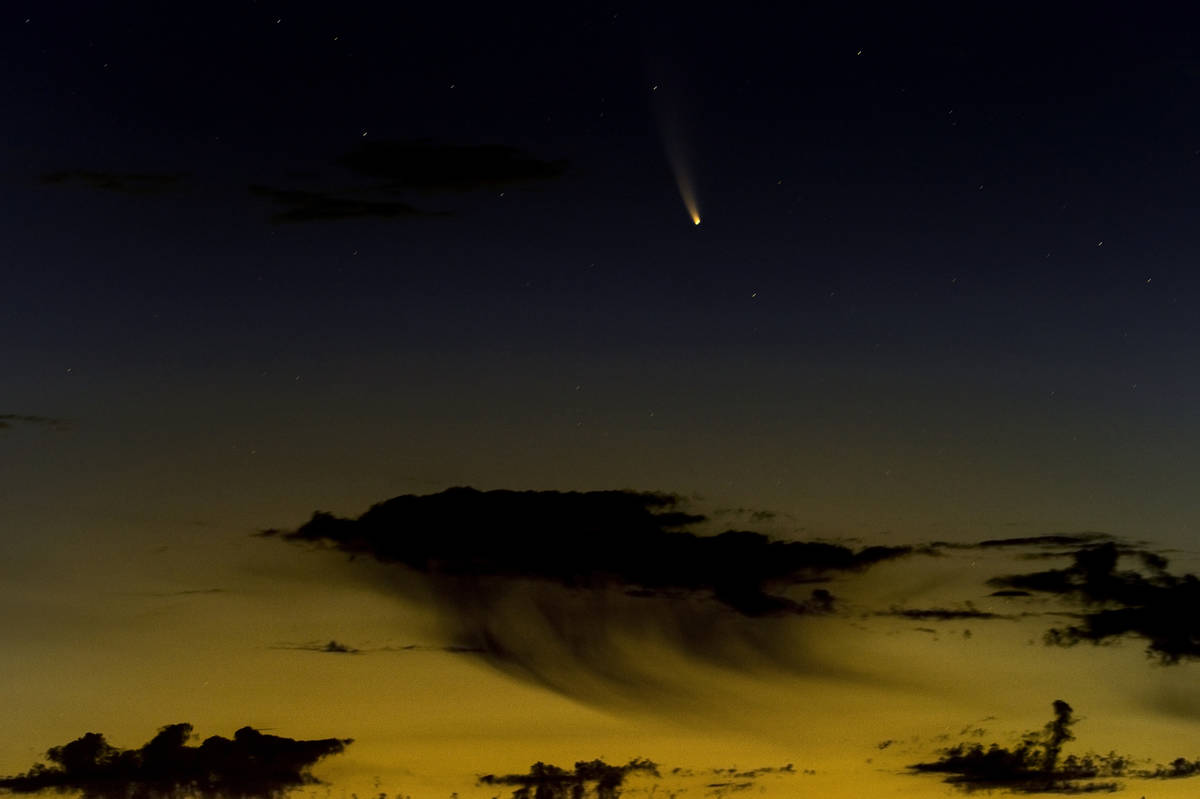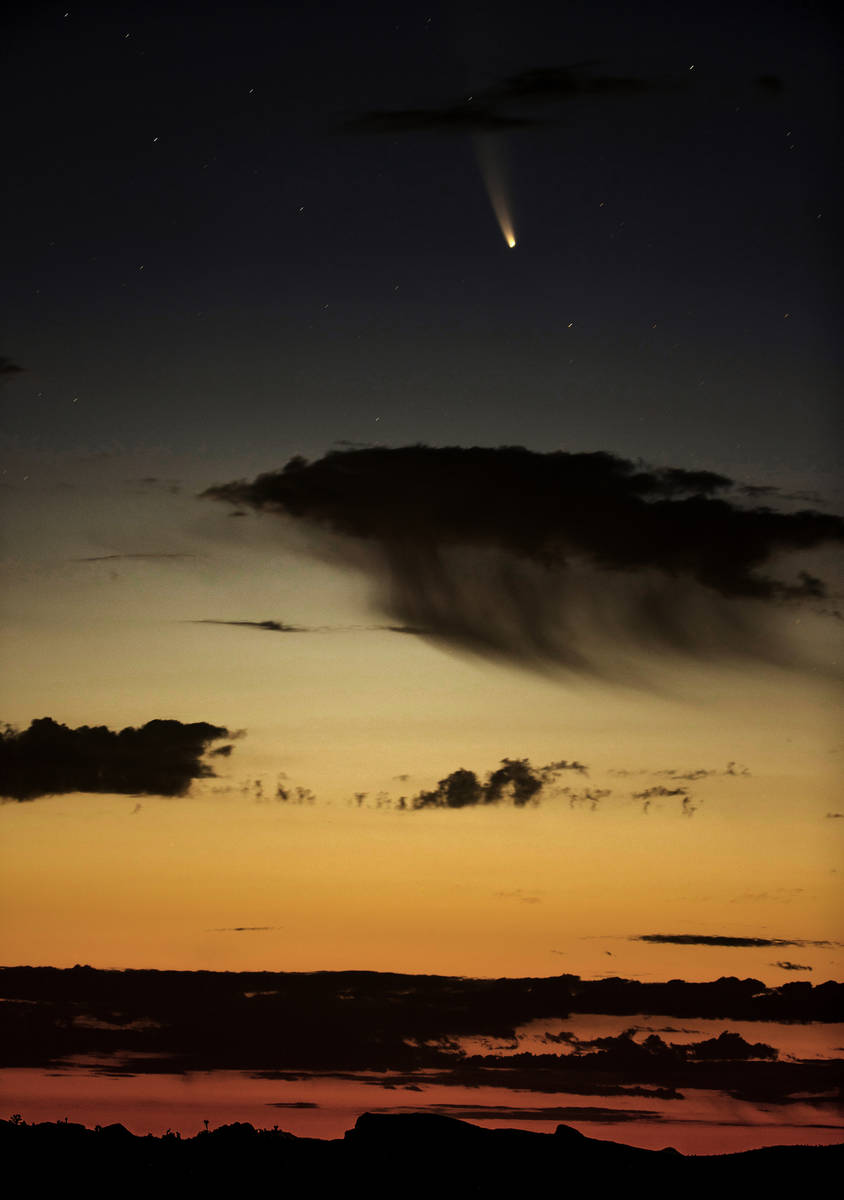Want to see the comet NEOWISE? Here’s how to do it.
This week is the best time to see a comet that won’t be visible again for 6,800 years.
Comet NEOWISE (C/2020 F3) is expected to remain visible to the naked eye until Saturday. Following that it will be visible with binoculars or a telescope until the end of July.
The comet entered the inner solar system for the first time in thousands of years in late March.
Discovered by, and named after NASA’s Near-Earth Object Wide-field Infrared Survey Explorer, NEOWISE is incredibly bright, so you can see it with the naked eye — even in the city, said Jerry Stein, vice president of the Las Vegas Astronomy Society.
But for optimal viewing, it’s best to plan ahead and get away from bright city lights.
Starting today, the comet should be visible after sunset. Previously the comet had been visible in the northern hemisphere an hour before sunrise.
John Mowbray, a local amateur astronomer and photographer, suggests getting out of the city to view it and set up 30 minutes before sunset. NEOWISE should become visible around 9:30 p.m. The comet can appear at varying times after sunset because it’s moving closer to the earth.
It’s important to be at a high elevation, with a clear view of the northwestern horizon so as the sun sets, you can see the tail coming over the horizon.
A comet is visiting from the most distant parts of our solar system and making a once-in-a-lifetime visit to our twilight skies! Below are images of comet C/2020 F3 NEOWISE as seen by @ISS_Research. Learn more about the comet and how to watch it: https://t.co/HGlMtyCCFU pic.twitter.com/krG2yC1MpZ
— NASA Asteroid Watch (@AsteroidWatch) July 8, 2020
Jason Steffen, an assistant professor of astrophysics at the University of Nevada, Las Vegas, said avoiding urban lighting is ideal. “If you were to get south of the city, or over by Lake Mead, or anywhere where you can block some of the city lights, it’ll be a good place to see it.”
Comets aren’t just pretty to look at. They can tell us a lot about the origins of the Earth.
Steffen said that comets are leftover materials from would-be planets. Over time, as conditions changed on Earth, the planet reprocessed due to extreme temperature changes, the emergence of life, and plate tectonics. The Earth today does not look like it did five billion years ago.
He said that in order to understand what was going on when the solar system was formed, “we need to study objects that have been basically unchanged since that time, and comets are a record of what the solar system was like 5 billion years ago.”
Like asteroids, comets orbit the solar system. However, they are primarily made of ice not rock. As comets come close to the sun, they are blasted with solar radiation which evaporates the ice and causes water vapor to surround the solid part. The evaporation also releases some of the ionic material from the comet.
The interaction of the water vapor and these ions create the bright tail visible to humans. Steffen said once comet NEOWISE leaves the inner solar system, it won’t be visible again for over 6,000 years.
Mowbray says that this comet presents a great opportunity for people to get outside with friends while social distancing. It’s a “good reset to put things in perspective about our place in the universe.”
Another tip: Download an app such as Skyview, Star Gazer, or Scope Nights on your phone that will show you the location of the comet. Currently, NEOWISE is passing through the constellation Lynx.
Earyn McGee is a 2020 Mass Media reporting fellow through the American Association for the Advancement of Science (AAAS). Email her at emcgee@reviewjournal.com. Follow her on Twitter at @Afro_Herper.























